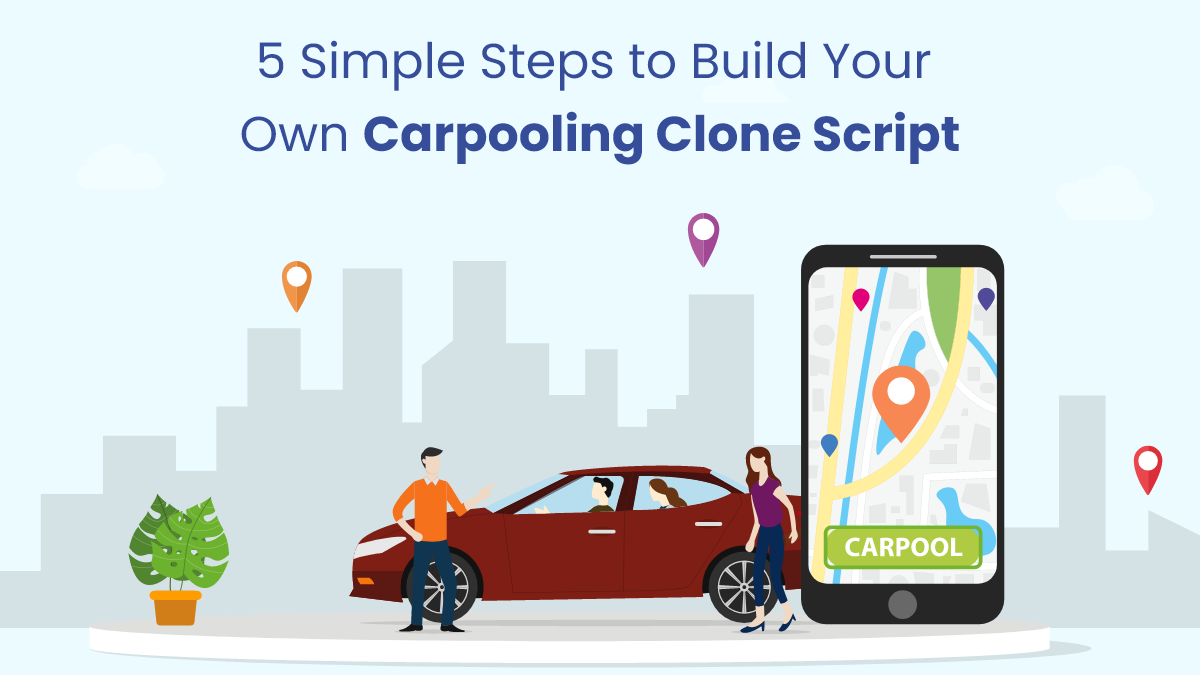In today's fast-paced world, where concerns about environmental sustainability and efficient transportation solutions are at the forefront, carpooling has emerged as a practical and eco-friendly way to commute. With the advancements in technology, creating your own carpooling platform has become more accessible than ever. In this guide, we'll outline five simple steps to help you embark on the journey of building your own carpooling clone script.
Step 1: Research and Planning
Before diving into development, it's essential to conduct thorough research and meticulous planning. Start by immersing yourself in the world of carpooling platforms. Analyze existing solutions to understand their features, functionalities, and user experience. Take note of what works well and what could be improved upon.
Understanding the Market Landscape
Begin by researching the current market landscape of carpooling platforms. Identify trends, user demographics, and potential competitors. Determine your target audience and their specific needs and preferences. Are you catering to daily commuters, long-distance travelers, or a niche market segment? Understanding your target users will guide your decision-making process throughout the development journey.
Defining Your Feature Set
Based on your research findings and user requirements, create a comprehensive list of features and functionalities for your carpooling clone script. Consider essential features such as user registration, profile management, ride posting, search and filtering options, booking and payment processing, as well as additional features like real-time tracking, ratings and reviews, and social sharing capabilities.
Step 2: Design and Prototyping
With a clear understanding of your project requirements, it's time to bring your ideas to life through thoughtful design and prototyping. Focus on creating an intuitive user interface (UI) that prioritizes usability and aesthetics.
Creating Wireframes and Mockups
Start by sketching out the basic layout and flow of your carpooling platform using wireframing tools. Translate these wireframes into high-fidelity mockups that showcase the visual design, branding elements, and interactive components of your platform. Solicit feedback from stakeholders and potential users to refine your designs further.
Prioritizing User Experience
Put yourself in the shoes of your users and design a seamless and intuitive user experience (UX). Simplify the onboarding process, streamline navigation, and optimize the user interface for accessibility and responsiveness across different devices and screen sizes.
Step 3: Development and Testing
With your designs finalized, it's time to roll up your sleeves and start development. Break down the development process into smaller tasks and set achievable milestones to track progress.
Choosing the Right Technology Stack
Select a technology stack that aligns with your project requirements, development expertise, and scalability needs. Consider factors such as programming languages, frameworks, databases, and hosting options. Leverage open-source tools and libraries to accelerate development and reduce costs where possible.
Implementing Core Features
Start by implementing essential features such as user authentication, profile management, ride listing and search functionalities, and basic booking and payment processing capabilities. Focus on building a robust and scalable backend infrastructure that can handle user traffic and data securely.
Step 4: Testing and Quality Assurance
As you progress with development, it's essential to conduct thorough testing and quality assurance to identify and rectify any bugs, errors, or performance issues.
Performing Functional Testing
Test each feature and functionality of your carpooling clone script to ensure they work as intended. Conduct unit tests, integration tests, and end-to-end tests to validate the behavior of individual components and the system as a whole. Pay special attention to edge cases, error handling, and security vulnerabilities.
Gathering User Feedback
Involve beta testers and early adopters in the testing process to gather feedback on usability, functionality, and overall user experience. Use this feedback to iterate on your design and development, making necessary improvements and refinements based on real-world usage scenarios.
Step 5: Launch and Deployment
After rigorous testing and refinement, it's time to unleash your carpooling clone script upon the world. Prepare for launch by finalizing your marketing strategy, setting up hosting and infrastructure, and ensuring compliance with relevant regulations and legal requirements.
Planning a Strategic Launch
Coordinate a strategic launch plan to generate buzz and attract users to your platform. Leverage social media, email marketing, and partnerships with local organizations or businesses to promote your carpooling service. Offer incentives or promotions to encourage early adoption and user engagement.
Monitoring Performance and Feedback
Once your carpooling clone script is live, monitor its performance closely and gather feedback from users. Track key metrics such as user sign-ups, ride listings, bookings, and user satisfaction ratings. Use this data to identify areas for improvement and optimization, ensuring a positive user experience and continued growth of your platform.
Conclusion
In conclusion, building your own carpooling clone script is an exciting journey that requires careful planning, thoughtful design, and meticulous execution. By following these five simple steps, you can create a successful carpooling platform that contributes to sustainable transportation solutions while providing convenience to commuters.




